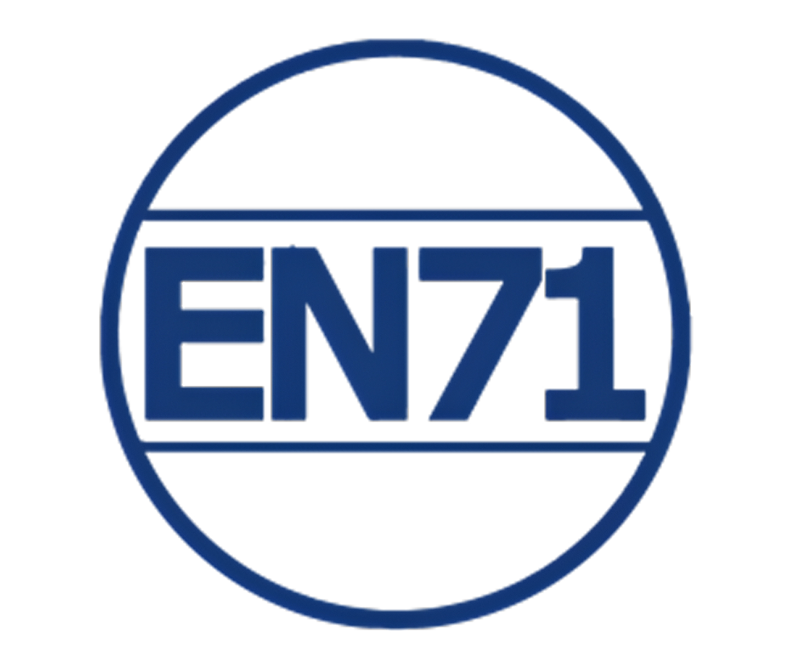EN71 is the European Standard for Toy Safety, ensuring toys are safe for children of all ages. It is mandatory for all toys sold in the European Union. EN71 testing covers physical, mechanical, chemical, and labeling aspects to prevent risks such as choking, toxic exposure, flammability, or injuries.
Manufacturers, importers, and distributors must ensure compliance before selling toys in the EU. Testing is conducted in certified laboratories, and products passing EN71 standards are often labeled with the CE mark, indicating conformity with EU safety requirements.

Purpose: Ensures toys are physically safe for children.
Tests Include:
Applicable Toys: All types of toys, especially for children under 3 years.
Purpose: Prevents fire hazards.
Tests Include:
Applicable Toys: All toys made from textiles, plastics, or paper.
Purpose: Ensures toys do not contain harmful chemicals.
Tests Include:
Applicable Toys: Toys with paints, coatings, or plastic components.
Purpose: Safety for chemical experiment toys.
Tests Include:
Applicable Toys: Chemistry kits, lab sets for children.
Purpose: Chemical safety for toys intended for children under 3.
Tests Include:
Applicable Toys: Educational toys with non-edible chemical components.
Purpose: Ensures toys are properly labeled with age warnings.
Tests Include:
Purpose: Ensures safety of finger paints, which are directly applied to skin or mouth-contact toys.
Tests Include:
Purpose: Ensures safety of toys designed for active play, climbing, or coordination development.
Tests Include:
Mechanical stability: Handles, seats, and ladders must withstand stress.
Structural integrity: No pinch points or sharp edges.
Fall and impact hazards: Surfaces and joints tested for strength under load.
Applicable Toys: Rocking horses, activity gyms, slides, and small climbing frames.
Purpose: Limits harmful organic chemicals in toy materials.
Tests Include:
Applicable Toys: Plastic, rubber, and synthetic toys, including teethers and chewable toys.
Purpose: Complements EN71-9 with further restrictions on chemical hazards.
Tests Include:
Applicable Toys: All toys that children may put in their mouths or handle frequently.
Purpose: Focuses on chemical safety in the toy’s surface coatings, paints, and adhesives.
Tests Include:
Applicable Toys: Painted or printed toys, decals, and stickers used in children’s products.
Purpose: Protects children from carcinogenic chemicals formed in rubber or elastomer toys.
Tests Include:
Applicable Toys: Rubber toys, latex balloons, teethers, and pacifiers.
Purpose: Ensures toys with smell-based components are safe.
Tests Include:
Applicable Toys: Scented games, scratch-and-sniff cards, and aromatic educational toys.
Purpose: Safety of large play structures and equipment for home or recreational use.
Tests Include:
Applicable Toys: Trampolines, swings, playhouses, and other large-scale equipment for children.
Yes, for all toys sold in the European Union, EN71 compliance is mandatory.
Manufacturers, importers, and distributors of toys intended for children under 14 years must ensure compliance.
Typically, 2–4 weeks, depending on the number of tests and sample complexity.
The product must be redesigned or reprocessed to remove hazards before it can be legally sold.
Yes, several certified labs in India offer EN71 testing, helping local manufacturers export to the EU.
Yes, passing EN71 testing is a prerequisite for applying the CE mark for toys in Europe.